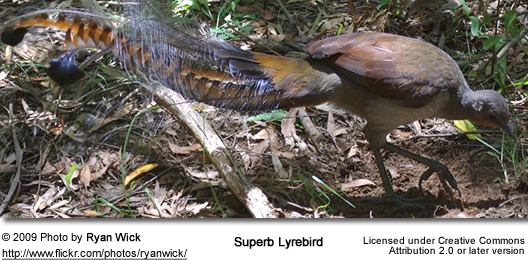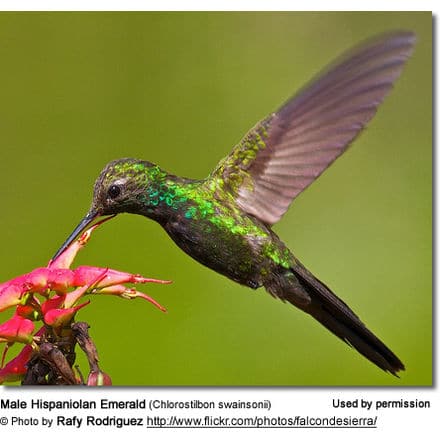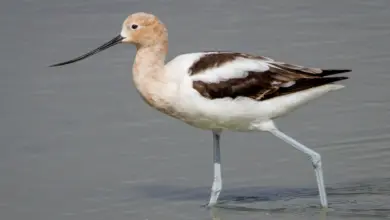Lyrebirds
A lyrebird is either of two species of ground-dwelling Australian birds, most notable for their extraordinary ability to mimic natural and artificial sounds from their environment. They are the:
- Superb Lyrebird or Weringerong (Menura novaehollandiae) is found in areas of wet forest in Victoria and New South Wales, and in Tasmania where it was introduced in the 19th Century. Females are 74-84cm long, and the males are a larger 80-98cm long — making them the third-largest passerine bird after the Thick-billed Raven and the Common Raven. Many Superb Lyrebirds live in the Dandenong Ranges National Park and Kinglake National Park around Melbourne, the Royal National Park and Illawarra region south of Sydney, and in many other parks along the east coast of Australia as well as nonprotected bushland.
- Albert’s Lyrebird (Menura alberti) is slightly smaller at a maximum of 90 cm (male) and 84 cm (female) (around 30-35 inches) and is only found in a very small area of Southern Queensland rainforest. This pheasant-sized songbird has a brown upper body plumage and rich chestnut below. It is very similar to the Superb Lyrebird in its habits. This bird also mimics other species’ sounds. The rarer of the two species of lyrebirds, the Albert’s Lyrebird lacks the elegant lyre-shaped tail feathers of the Superb Lyrebird. It also builds platforms by trampling down dense vegetation for courtship display instead of scratch-up mounds. The diet consists mainly of small animals found on forest floors or from rotting logs. Named after Prince Albert, the Prince Consort of Queen Victoria of the United Kingdom, Albert’s Lyrebird inhabits and is endemic to subtropical rainforests of Australia, in a small area on the state border between New South Wales and Queensland. Due to ongoing habitat loss on this restricted range species gives the Albert’s Lyrebird its Vulnerable status on the IUCN Red List of Threatened Species.
Lyrebirds are among Australia‘s best-known native birds, even though they are rarely seen in their natural habitat. As well as their extraordinary mimicking ability, lyrebirds are notable because of the striking beauty of the male bird’s huge tail when it is fanned out in display; and also because of their courtship display.
Ecology
Male lyrebirds call mostly during winter when they construct and maintain an open arena-mound in dense bush, on which they sing and dance in courtship, to display to potential mates, of which the male lyrebird has several. Females build an untidy nest usually low to the ground in a moist gully where she lays a single egg, She is the sole parent who incubates the egg for over 50 days until it hatches, and she is also the sole carer of the lyrebird chick.
Lyrebirds feed on insects, spiders, earthworms, and, occasionally, seeds. They find food by scratching with their feet through the leaf litter. When in danger, lyrebirds run, rather than fly, being awkward in flight, and have also been seen to take refuge in wombat burrows. Also, firefighters sheltering in mine shafts during bushfires have been joined by lyrebirds. [1]
Mimicry
A lyrebird’s call is a rich mixture of its song and any number of other sounds it has heard. The lyrebird’s syrinx (= sound-producing vocal organ) is the most complexly muscled of the Passerines (songbirds), giving the lyrebird extraordinary ability, unmatched in vocal repertoire and mimicry.
Lyrebirds render with great fidelity the individual songs of other birds and the chatter of flocks of birds and also mimic other animals, human noises, machinery of all kinds, explosions, and musical instruments.
The lyrebird is capable of imitating almost any sound — from a mill whistle to a cross-cut saw, and, not uncommonly, sounds as diverse as chainsaws [2], car engines and car alarms, fire alarms, rifle shots, camera shutters, dogs barking and crying babies.
Lyrebirds are shy birds and a constant stream of bird calls coming from one place is often the only way of identifying them and their presence. The female lyrebird is also an excellent mimic, but she is not heard as often as the male lyrebird.
One researcher, Sydney Curtis, has recorded flute-like lyrebird calls in the vicinity of the New England National Park. Similarly, in 1969, a park ranger, Neville Fenton, recorded a lyrebird song, which resembled flute sounds, in the New England National Park, near Dorrigo in northern coastal New South Wales.
After much detective work by Fenton, it was discovered that in the 1930s, a flute player living on a farm adjoining the park used to play tunes near his pet lyrebird. The lyrebird adopted the tunes into his repertoire and retained them after release into the park. Neville Fenton forwarded a tape of his recording to Norman Robinson.
Because a lyrebird can carry two tunes at the same time, Robinson filtered out one of the tunes and put it on the phonograph for analysis. The song represents a modified version of two popular tunes in the 1930s: “The Keel Row” and “Mosquito’s Dance”. Musicologist David Rothenberg has endorsed this information.
An anecdotal example
A Lyrebird’s Tale
During the early 1930s, a male lyrebird, called “James”, formed a close bond of friendship with a human being, Mrs. Wilkinson, after she had been offering food to him for some time. James would perform his courtship dance for her on one of his mounds which he had constructed in her backyard — and he would also put on his display for a wider audience, but only when Mrs. Wilkinson was one of those present.
On one such occasion, James’ performance lasted for forty-three minutes, and included steps to a courtship dance accompanied by his tune — and also included imitating perfectly the calls of an Australian Magpie, and a young magpie being fed by a parent bird, an Eastern Whipbird, a Bellbird, a complete laughing-song of a Kookaburra, two Kookaburras laughing in unison, a Yellow-tailed Black-cockatoo, a Gang-gang Cockatoo, an Eastern Rosella, a Pied Butcherbird, a Wattle-bird, a Grey Shrike-thrush, a Thornbill, a White-browed Scrubwren, a Striated Pardalote, a Starling, a Yellow Robin, a Golden Whistler, a flock of parrots whistling in flight, the Crimson Rosella, several other birds whose notes his audience were not able to identify, and the song of honey-eaters (tiny birds with tiny voices), that gather in numbers and “cheep” and Twitter in a multitudinous sweet whispering.
To mimic the honeyeaters’ singing faithfully, James was obliged to subdue his powerful voice to the faintest pianissimo, but he contrived, nevertheless, to make each note of the soft chorus audibly distinct. Also included in James’ performance was his perfect mimicry of the sounds made by a rock crusher at work, a hydraulic ram, and the tooting of motor horns. [9]
Systematics and evolution
The classification of lyrebirds has been much debated. They were briefly thought to be Galliformes like the broadly similar-looking partridge, junglefowl, and pheasants that Europeans were familiar with, but since then have usually been classified in a family of their own, Menuridae, which contains a single genus, Menura.
It is generally accepted that the lyrebird family is most closely related to the scrub-birds (Atrichornithidae) and some authorities combine both in a single family, but evidence that they are also related to the bowerbirds remains controversial.
Lyrebirds are not endangered in the short to medium term. Albert’s Lyrebird has a very restricted habitat but appears to be secure within it so long as the habitat remains intact, while the Superb Lyrebird, once seriously threatened by habitat destruction, is now classified as common. Even so, lyrebirds are vulnerable to cats and foxes, and it remains to be seen if habitat protection schemes will stand up to increased human population pressure.
Lyrebirds are ancient Australian animals: The Australian Museum has fossils of lyrebirds dating back to about 15 million years ago [10]. The prehistoric Menura tyawanoides has been described from Early Miocene fossils found at the famous Riversleigh site.
Lyrebirds in popular culture
The lyrebird has been featured as a symbol and emblem many times, especially in New South Wales and Victoria (where the Superb Lyrebird has its natural habitat) – and in Queensland in Australia (where Albert’s Lyrebird has its natural habitat).
- A male Superb Lyrebird is featured on the reverse of the Australian 10-cent coin. [1]
- A stylized Superb Lyrebird appears in the transparent window of the Australian 100-dollar note.
- A silhouette of a male Superb Lyrebird is the logo of the Australian Film Commission
- An illustration of a male Superb Lyrebird, in courtship display, is the emblem of the New South Wales National Parks and Wildlife Service
- The pattern on the curtains of the Victorian State Theatre is the image of a male Superb Lyrebird, in courtship display, as viewed from the front.
- A stylized illustration of a male Albert’s Lyrebird was the logo of the Queensland Conservatorium of Music before the Conservatorium became part of Griffith University. In the logo, the top part of the lyrebird’s tail became a music stave.
- A stylized illustration of part of a male Superb Lyrebird‘s tail is the logo for the Lyrebird Arts Council of Victoria.
- There are many other companies with the name Lyrebird, and these also have Lyrebird logos.
Painting by John Gould
The lyrebird is so called because the male bird has a spectacular tail (consisting of 16 highly modified feathers (two long slender rates at the centre of the plume, two broader medians on the outside edges, and twelve filamentaries arrayed between them), which was originally thought to resemble a lyre. This happened when a lyrebird specimen (which had been taken from Australia to England during the early 1800s) was prepared for display at the British Museum by a taxidermist who had never seen a live lyrebird.
The taxidermist mistakenly thought that the tail would resemble a lyre and that the tail would be held in a similar way to that of a peacock during courtship display, and so he arranged the feathers in this way. Later, John Gould (who had also never seen a live lyrebird), painted the lyrebird from the British Museum specimen.
Although very beautiful, the male lyrebird’s tail is not held as in John Gould’s painting. Instead, the male lyrebird’s tail is fanned over the lyrebird during the courtship display, with the tail completely covering his head and back — as can be seen on an Australian 10-cent coin (above), where the Lyrebird’s tail (in courtship display) is portrayed accurately.



